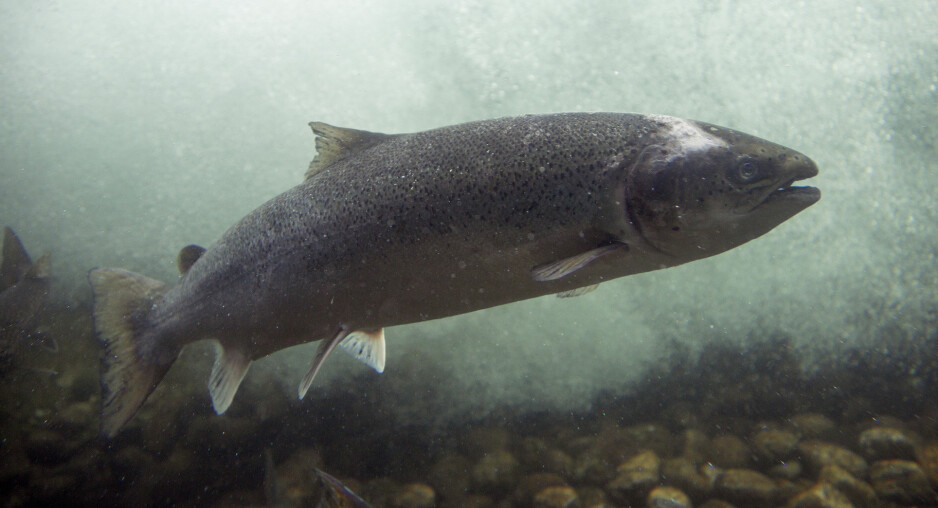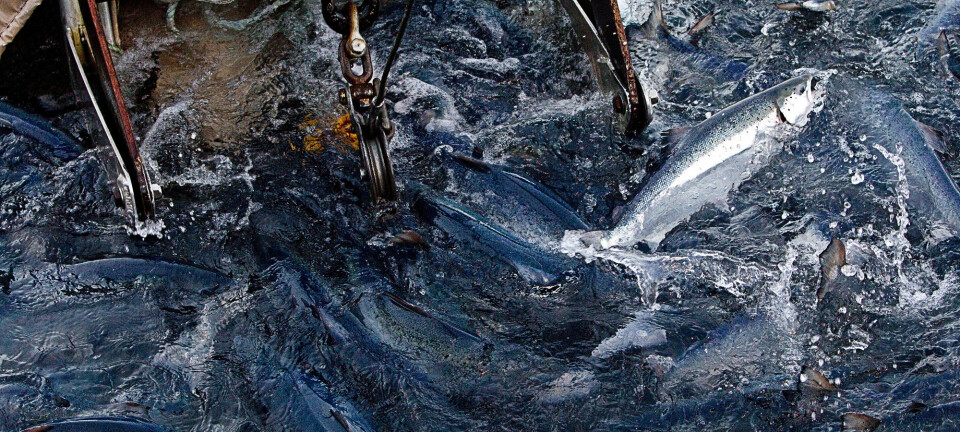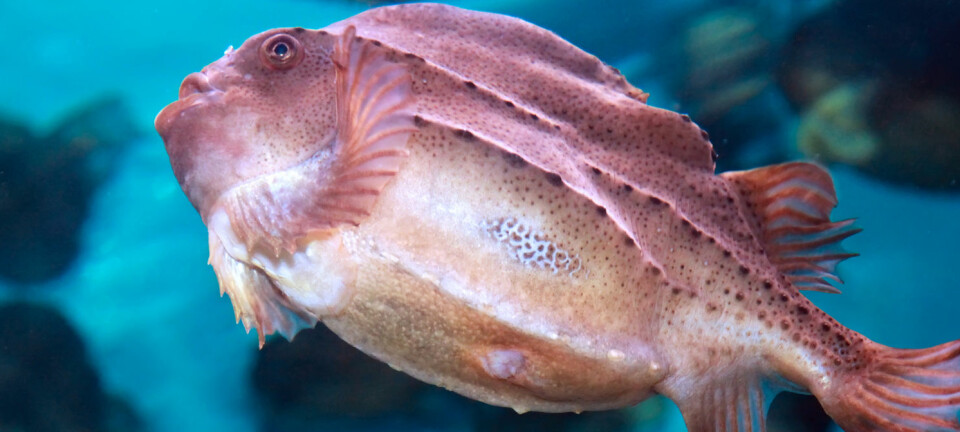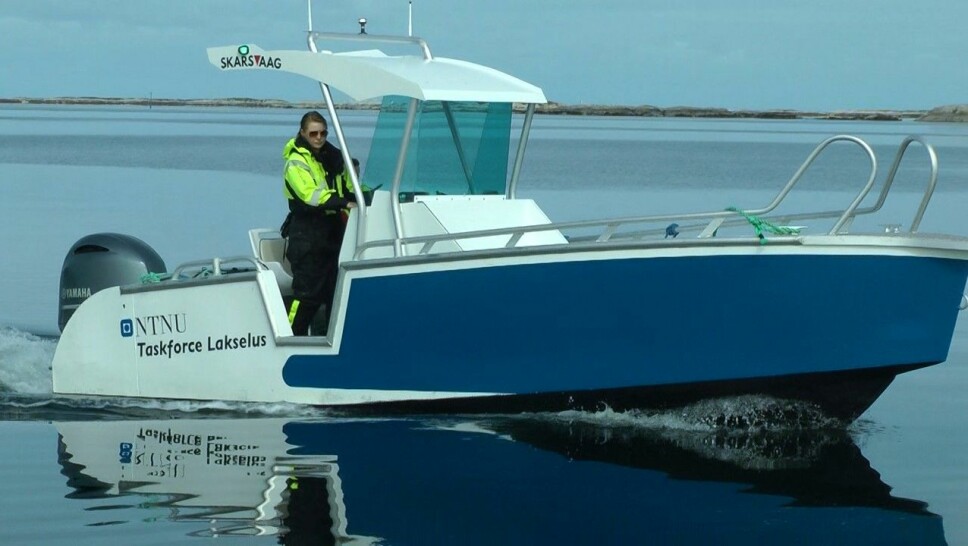
These measures can slow lice infestations on farmed salmon
A study of nearly 50 million salmon over six years shows that cleaner fish can delay lice infestations at salmon farms — if there are enough of the cleaner fish. As a result, fish farms could reduce the number of delousing procedures.
Marine biologist Lone Sunniva Jevne has been out in the field in the skerries north of Frøya in Trøndelag, where farmed salmon is big business, to study fish farms.
The aquaculture industry along the coast exported salmon worth NOK 73 billion in 2019, figures from the Norwegian Seafood Council show. But salmon lice eat away at the industry’s profitability. In 2018, the fight against salmon lice cost more than NOK 5 billion in direct costs, according to the national financial newspaper Dagens Næringsliv.
«I wanted to learn more about which factors are associated with lice infestations, and which control mechanisms can delay the problem,» Jevne said to sciencenorway.no.
She collected data from six years and 16 facilities on farmed salmon and their lives in the salmon cages.
Jevne recently defended her doctoral dissertation on the subject, as one the first of six PhD candidates associated with the Blue Competence Centre (Blått kompetansesenteret ) on Frøya.
Cleaner fish delayed lice infestation
In recent years, the aquaculture industry has used cleaner fish as a biological weapon to fight lice. But the effectiveness of cleaner fish in keeping salmon free of lice is poorly documented.
The Norwegian Food Safety Authority requires the aquaculture industry to obtain documentation that shows the effect. A review carried out by the Institute of Marine Research shows that there is no such documentation to date, the Norwegian Food Safety Authority wrote on its website on 25 February.
But Jevne's conclusion is clear.
Cleaner fish seem to delay lice infestations, if there are enough of the fish. The fish, which snack on lice, can thus reduce the number of delousing sessions the salmon have to undergo.
«Fish farms that had more than four per cent cleaner fish in the salmon cages, had 0.1 adult female lice later than other farms that didn’t have this many fish,» says Jevne.
Her doctorate is part of a project at the Norwegian University of Science and Technology (NTNU) called Taskforce Lakselus, which studies approaches that fish farmers can use to better control the natural parasite.
The researchers are collaborating with the industry along the Trøndelag coast and the Blue Competence Centre on Frøya.
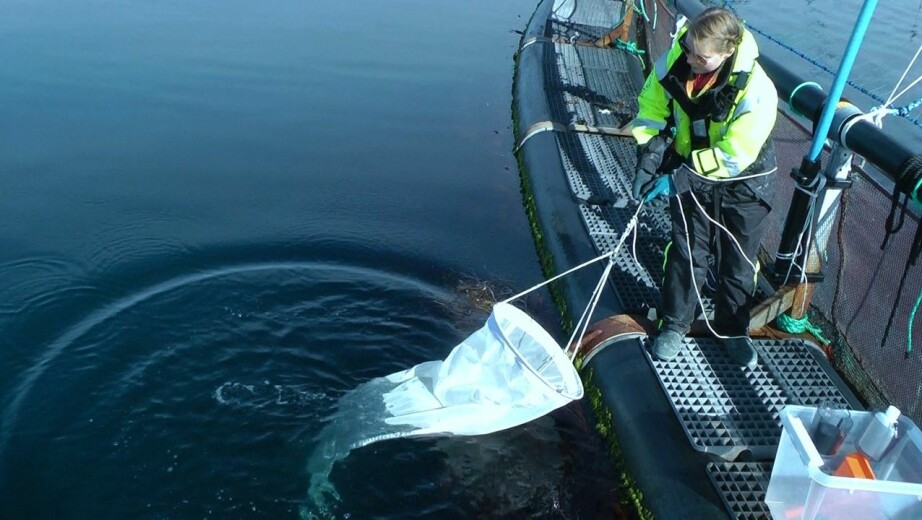
Must count lice regularly
But first a little background. Salmon farmers are required to count lice on at least ten salmon in each cage once a week, when the sea temperature is above four degrees C. When the sea is colder, counting once every 14 days is enough.
Low sea temperatures delay salmon lice reproduction.
The Norwegian limit is 0.5 adult female lice per salmon. If there are five salmon lice or more per ten salmon that are selected at random, the facility must undertake a delousing procedure.
The legal requirement is even stricter during certain weeks in the spring. Then the limit is 0.2 lice per salmon.
The salmon are caught in a net and anesthetized when the lice are counted. In practice, at least 20 salmon are checked each time. In addition, lice that may have fallen off the salmon into the net are counted.
Adult, mobile female lice have to be reported. There’s a great deal of variety in how often different facilities have to undertake delousing. Salmon are slaughtered when they have been in the sea for about a year and a half. During a production cycle, a salmon may undergo several rounds of delousing.
Some production cycles completely avoid having to delouse the fish.
The delousing methods may be chemical, mechanical or water-based. All delousing procedures are stressful for the salmon.
Electricity, temperature and cleaner fish
Lone Jevne followed three salmon production cycles over six years. In total, around 15 million salmon were set out for each cycle.
She received all reports of lice from the 16 fish farms owned by five aquaculture companies on Frøya from 2013 to 2018.
Jevne was also given information on the number of cleaner fish that were released into the cages.
The extent to which the cleaner fish were used in the various facilities differed greatly.
She also collected sea temperatures, currents and wind conditions as a check on her data. Temperature is a very important factor in how fast lice reproduce.
«When sea temperatures rise to the point where there is an imminent bloom of lice, you can take action to control them,» she says.
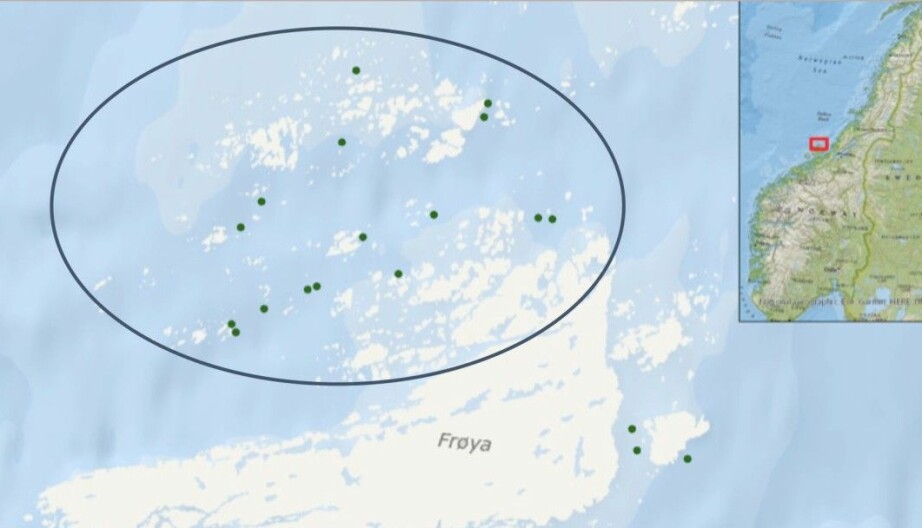
Having enough cleaner fish did the trick
The marine biologist measured the time it took before an adult female louse was found on every tenth salmon during the production cycle, which is the equivalent of 0.1 lice per salmon.
Jevne found a clear difference in how quickly lice infestations occurred at the fish farms, depending on the number of cleaner fish, such as lumpfish or wrasse, that were in the cages.
Salmon in facilities that had more than four per cent cleaner fish in a cage had 0.1 adult female lice later in the production cycle than facilities that didn’t have as many cleaner fish, Jevne says.
The facilities with a lower proportion of cleaner fish were thus more quickly infested by lice.
Jevne emphasizes that she chose the four per cent limit at random, because she divided the facilities into two groups according to the proportion of cleaner fish so she could compare them to each other.
The proportion is measured as the number of cleaner fish in relation to the number of salmon.
Related: Every year, 50 million cleaner fish die in Norwegian fish farms
Related: Norwegian fish farmers reprimanded for poor treatment of cleaner fish
Cleaner fish must adapt
Jevne also found differences between production cycles when it came to how early in the cycle the cleaner fish were released.
«It seems that early release of cleaner fish in the salmon cages can provide better control of lice infestations,» she says.
It has become more common to release lumpfish in particular earlier than previously on this part of the coast. That gives the cleaner fish time to adapt to living in the cage.
«Cleaner fish need some time in the cage before they start eating lice to the point where it makes a difference,» says Jevne.
But exactly when fish farmers should release cleaner fish into the cages is a difficult balancing act.
«The fish are not as adapted to the cage environment as the salmon, and can die faster than the salmon. It can be a waste of cleaner fish they are not taken care of well enough,» she said.
Cleaner fish are also protect under animal welfare laws
Many cleaner fish die or disappear without a trace in the cages without the farmers having an overview of the situation.
This winter, the Norwegian Food Safety Authority demanded that the aquaculture industry document significant improvement in the treatment of cleaner fish if the industry wants to continue to use them in the future.
The Norwegian Animal Protection Alliance said it was appreciative of the requirement, the online news site iLaks reported on 26 February.
Resistance may be a factor
There were delousing sessions almost all the time beginning in the 2015-2016 season. How quickly cleaner fish are released can play a decisive role in the timing of the next lice boom.
Jevne emphasizes that there may be other factors that have come into play in what happened, because the companies changed methods for delousing cages between production cycles.
Factors such as resistance to chemical delousing may have led to a population boom in salmon lice during one of the seasons.
From chemical to mechanical delousing
This study was performed when the industry was rapidly changing delousing methods.
In the first season, between 2013 and 2014, chemical delousing was the only method used.
In the second season, 2015-2016, mechanical delousing was introduced.
During this second production cycle, the lice infestation was greater.
This may be because the lice had become resistant to the chemicals used in the previous season.
In the third season, 2017-2018, mechanical delousing dominated, with 64 per cent of the treatments using this approach.
Important to share information
If one fish farm has a lot of lice, neighbouring farms can quickly become infested.
The lice spread during their larval stage, where they floats in the seawater.
«We know little about this stage, so it may be important to count the larvae as well,» Jevne says.
Warning neighbouring facilities of high lice numbers is effective in preventing lice from spreading, Jevne said.
«Lice infestations can quickly get out of control. It is important that the farms talk to each other. Then neighbouring facilities can start their prevention programmes more quickly,» she says.
«The records on the Norwegian Coastal Administration's BarentsWatch are at the plant level, with an average for the entire plant. Word of mouth also works, so most companies have an overview of what is happening in the neighbouring facilities,» says Jevne.
The sight of well boats used for delousing are also a clear indication of lice infestations.
More focus on prevention
«Many things have changed in the area during the period, with an increased use of cleaner fish, more lice skirts and more focus on prevention,» says Jevne.
A lice skirt is a screen that is lowered into the water and fastened around the upper part of the cage. It acts as a mechanical shield against lice larvae. The lice larvae prefer to be in the upper layer of the sea.
The fish farming companies that participated in the study were Ervik Laks og Ørret AS, Mowi ASA, Måsøval Fiskeoppdrett AS, Lerøy Midt AS and Salmar Farming AS.
The doctoral candidates in the programme are jointly funded by the industry, the Research Council of Norway, Åkerblå and the Fisheries and Aquaculture Research Fund (FHF).
Translated by Nancy Bazilchuk
Reference:
Lone Sunniva Jevne og Kjell Inge Reitan: How are the salmon lice (Lepeophtheirus salmonis Krøyer, 1837) in Atlantic salmon farming affected by different control efforts: A case study of an intensive production area with coordinated production cycles and changing delousing practices in 2013–2018, Journal of Fish Diseases, 2019. https://doi.org/10.1111/jfd.13080
———








